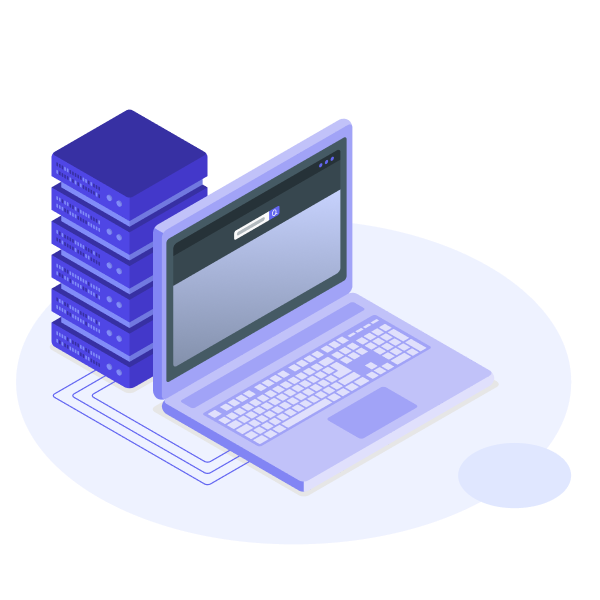When setting up a Virtual Private Server (VPS), most users focus heavily on CPU cores and storage space while overlooking one of the most critical components: RAM. Random Access Memory serves as the backbone of your server's performance, directly impacting everything from website loading speeds to user capacity and overall system stability. Whether you're hosting a personal blog or managing enterprise applications, understanding your RAM requirements can mean the difference between a lightning-fast server and a sluggish, unreliable system.
Why Does RAM Make or Break Your VPS Performance?
Random Access Memory functions as your server's temporary workspace, storing actively used data for instant access. This temporary storage allows your system to perform operations at incredible speeds compared to retrieving the same information from disk storage, even modern SSDs. Think of RAM as your server's desk space where it keeps all the tools and documents it needs for immediate use.
Every service running on your VPS consumes memory resources. Your web server, database, background processes, and applications all compete for available RAM. When this precious resource becomes scarce, your system compensates by using swap space, essentially borrowing storage from your hard drive to simulate additional memory. This fallback mechanism keeps your server operational but at a significant performance cost that users will definitely notice.
The relationship between RAM and performance is exponential rather than linear. A server running at 90% memory capacity doesn't just perform 90% as well as an optimally configured system. Instead, it often struggles with severe slowdowns, timeouts, and potential crashes during traffic spikes or resource-intensive operations.
Why RAM Requirements Differ Dramatically Across Use Cases?
There's no one-size-fits-all answer to VPS memory requirements because every deployment scenario presents unique demands. Your specific combination of software, expected traffic levels, and performance expectations creates a distinct memory profile that differs significantly from other users' needs.
Consider the vast difference between a simple HTML portfolio site and a complex e-commerce platform. The static site might happily operate with minimal memory, while the online store requires substantial RAM to handle product databases, user sessions, payment processing, and real-time inventory updates simultaneously.
Memory Requirements for Common VPS Applications
- Simple Static Websites
Basic HTML sites with minimal server-side processing typically function adequately with 256 to 512 MB of RAM. These lightweight deployments primarily serve cached content with minimal database interactions or dynamic processing requirements.
- WordPress and Content Management Systems
A basic WordPress installation requires at least 512 MB of RAM, though 1 GB provides much better stability and room for growth. Sites utilizing numerous plugins, themes with complex functionality, or caching systems should consider 2 GB as a starting point. WooCommerce stores and high-traffic blogs often demand 2 to 4 GB depending on their specific configuration and visitor volume.
- Custom Applications and Database-Driven Sites
Modern web applications built with frameworks like Laravel, Django, or Node.js typically require 2 to 8 GB of RAM. The exact amount depends on your application's architecture, database complexity, concurrent user handling, and any additional services like Redis or Elasticsearch running alongside your main application.
- Control Panels and Management Software
Popular control panels like cPanel are notorious memory consumers, requiring at least 1 GB exclusively for their operation. This allocation doesn't include your actual websites or applications, meaning you need additional RAM on top of cPanel's requirements for your actual content and services.
What Happens When Your VPS Runs Out of Memory?
Insufficient RAM triggers a cascade of performance problems that can cripple your server's effectiveness. When available memory becomes exhausted, your system activates swap space, using a portion of your hard drive as emergency memory. While this prevents immediate crashes, it creates a severe performance bottleneck.
Swapping operations are dramatically slower than native RAM access, sometimes by factors of hundreds or thousands. Users experience this slowdown as extended page loading times, unresponsive interfaces, and frequent timeout errors. During peak traffic periods or resource-intensive background tasks, an under-provisioned server may become completely unresponsive.
Beyond performance issues, memory pressure can cause service instability. Applications may crash unexpectedly, database connections might timeout, and in extreme cases, the entire system could become unresponsive, requiring a hard restart that results in downtime and potential data loss.
How to Calculate Your VPS Memory Requirements
Determining appropriate RAM allocation requires systematic analysis of your specific deployment needs. Start by cataloging every service that will run on your server. Web servers like Apache or Nginx, databases such as MySQL or PostgreSQL, caching systems, and any background processes all contribute to your total memory footprint.
Next, research the memory requirements of your chosen content management system or custom application. A WordPress site with five basic plugins has vastly different needs compared to a WooCommerce store with advanced inventory management, customer account systems, and integrated payment processing.
Traffic expectations play a crucial role in memory planning. A personal blog expecting dozens of daily visitors requires far less RAM than a business website anticipating thousands of concurrent users. Each visitor session consumes memory for maintaining connection states, processing requests, and managing user-specific data.
Always incorporate a substantial buffer into your calculations. Planning for 25 to 50 percent more RAM than your calculated minimum provides room for traffic growth, additional features, and unexpected usage spikes. This buffer prevents performance degradation during successful periods when your site experiences increased popularity.
Essential Strategies for Optimizing VPS Memory Usage
Effective memory management extends your server's capabilities without requiring immediate hardware upgrades. Implementing caching solutions like Varnish, Redis, or WordPress object caching dramatically reduces database query frequency, freeing substantial memory resources for other operations.
Configure swap space as an emergency backup rather than a regular memory extension. Consistently high swap usage indicates insufficient RAM allocation and signals the need for a memory upgrade rather than relying on this performance-degrading workaround.
Optimize your software configurations to match available memory limits. Adjusting Apache MaxRequestWorkers, PHP memory limits, and MySQL buffer pool sizes ensures efficient resource utilization without overwhelming your system during peak usage periods.
Practice minimalist service management by running only essential processes. Each additional service consumes memory, so disable unnecessary background tasks, unused software components, and redundant monitoring tools that don't provide clear value for your specific use case.
Recognizing When It's Time to Upgrade Your RAM
Monitor your server's memory usage regularly using tools like htop, top, or your hosting provider's dashboard. Consistent memory utilization above 80 percent indicates you're approaching capacity limits and should consider upgrading before experiencing performance problems.
Watch for warning signs that suggest immediate memory expansion needs. Extended page loading times despite optimized code, frequent out-of-memory errors in server logs, sluggish control panel responsiveness, and increased swap file activity all indicate your current RAM allocation no longer meets your requirements.
Growing traffic combined with deteriorating performance during peak hours represents a clear upgrade trigger. As your online presence expands, your memory needs will naturally increase to accommodate additional concurrent users, larger databases, and more complex processing requirements.
How Do You Future-Proof Your VPS Without Overspending on RAM?
Successful VPS memory planning requires balancing current needs with future growth expectations. Starting with conservative estimates and monitoring actual usage patterns allows you to make informed scaling decisions as your project evolves.
Most reputable VPS providers offer seamless RAM upgrades, often implementable with simple control panel clicks or brief service notifications. This scalability means you can start conservatively and expand resources as genuine needs develop rather than over-provisioning from the beginning.
Remember that adequate RAM investment pays dividends in user experience, search engine rankings, and overall project success. A well-provisioned server handles traffic growth gracefully, maintains consistent response times, and provides the stable foundation necessary for building a thriving online presence.
Taking time to properly assess your VPS memory requirements now prevents frustrating performance issues, user dissatisfaction, and emergency upgrade situations later. Your future self will appreciate the foresight of proper initial planning.

















